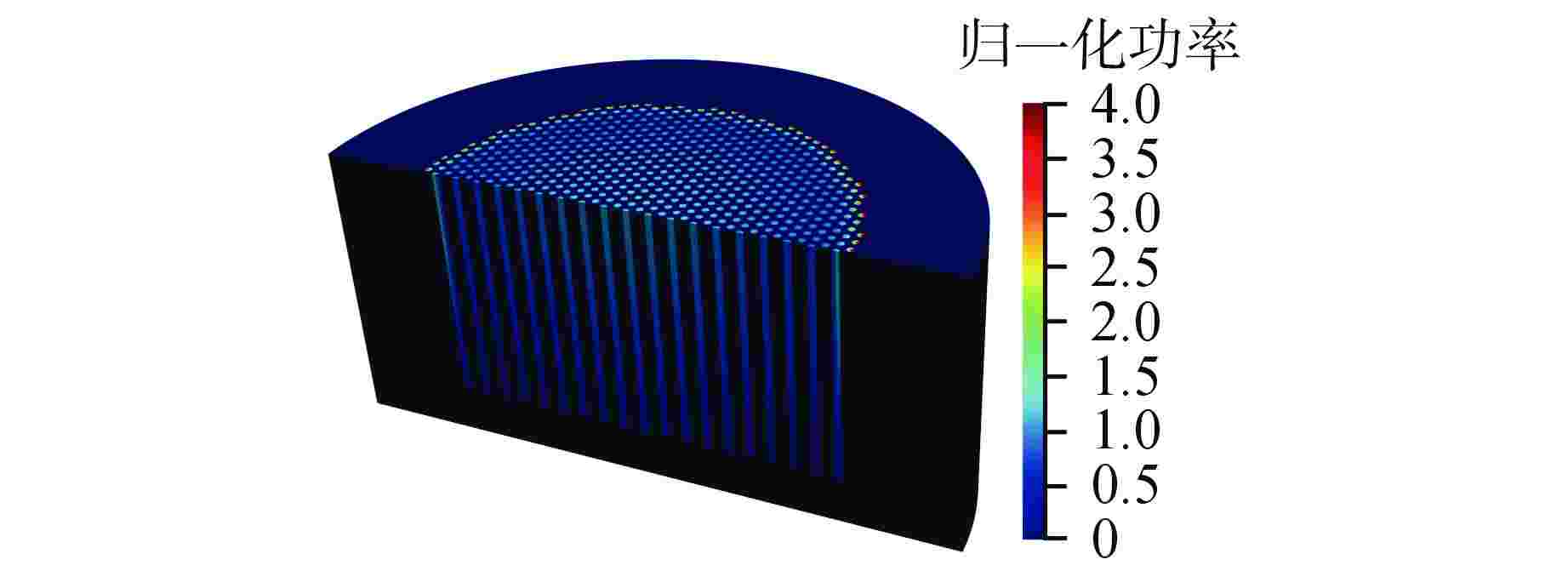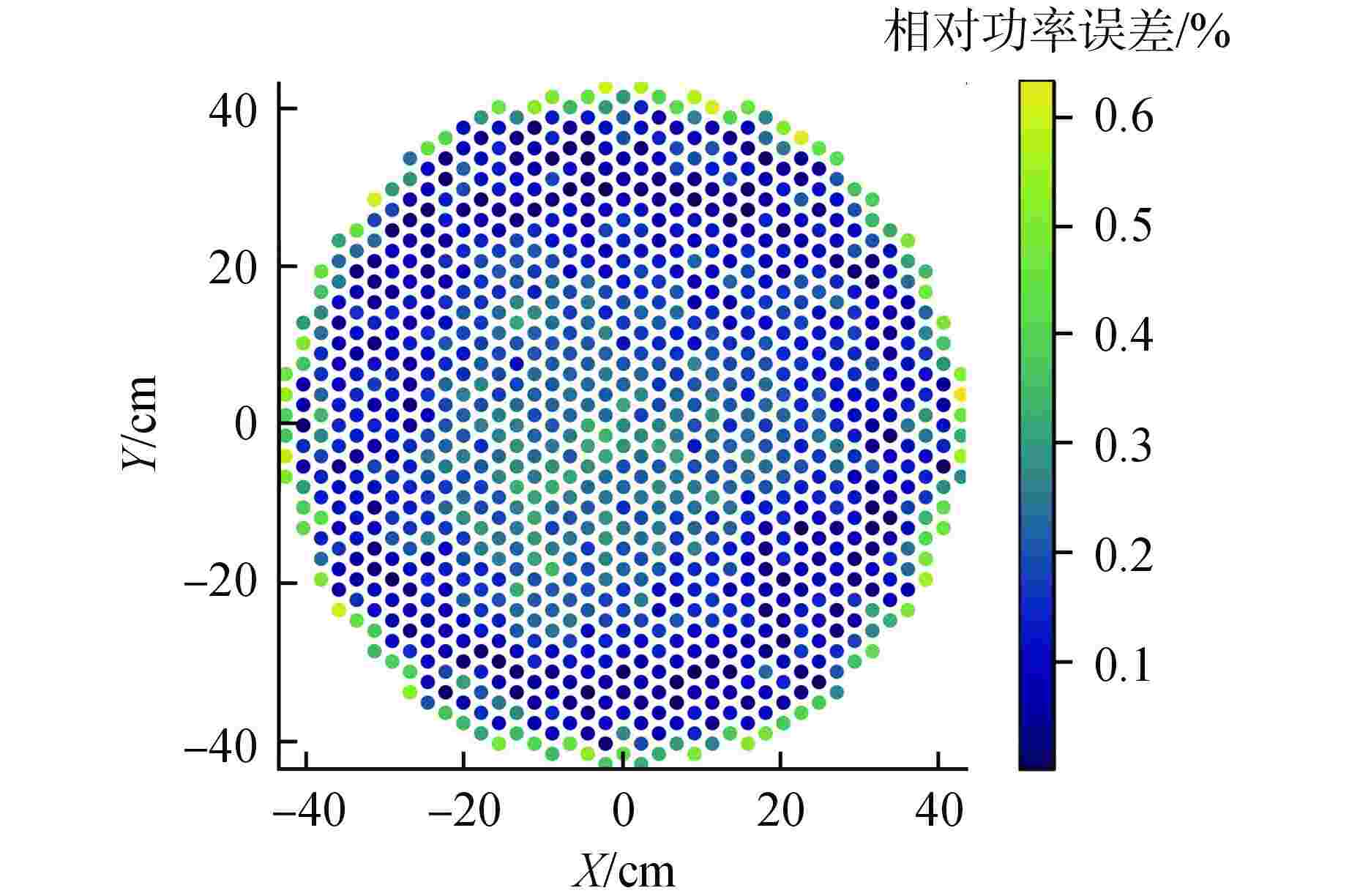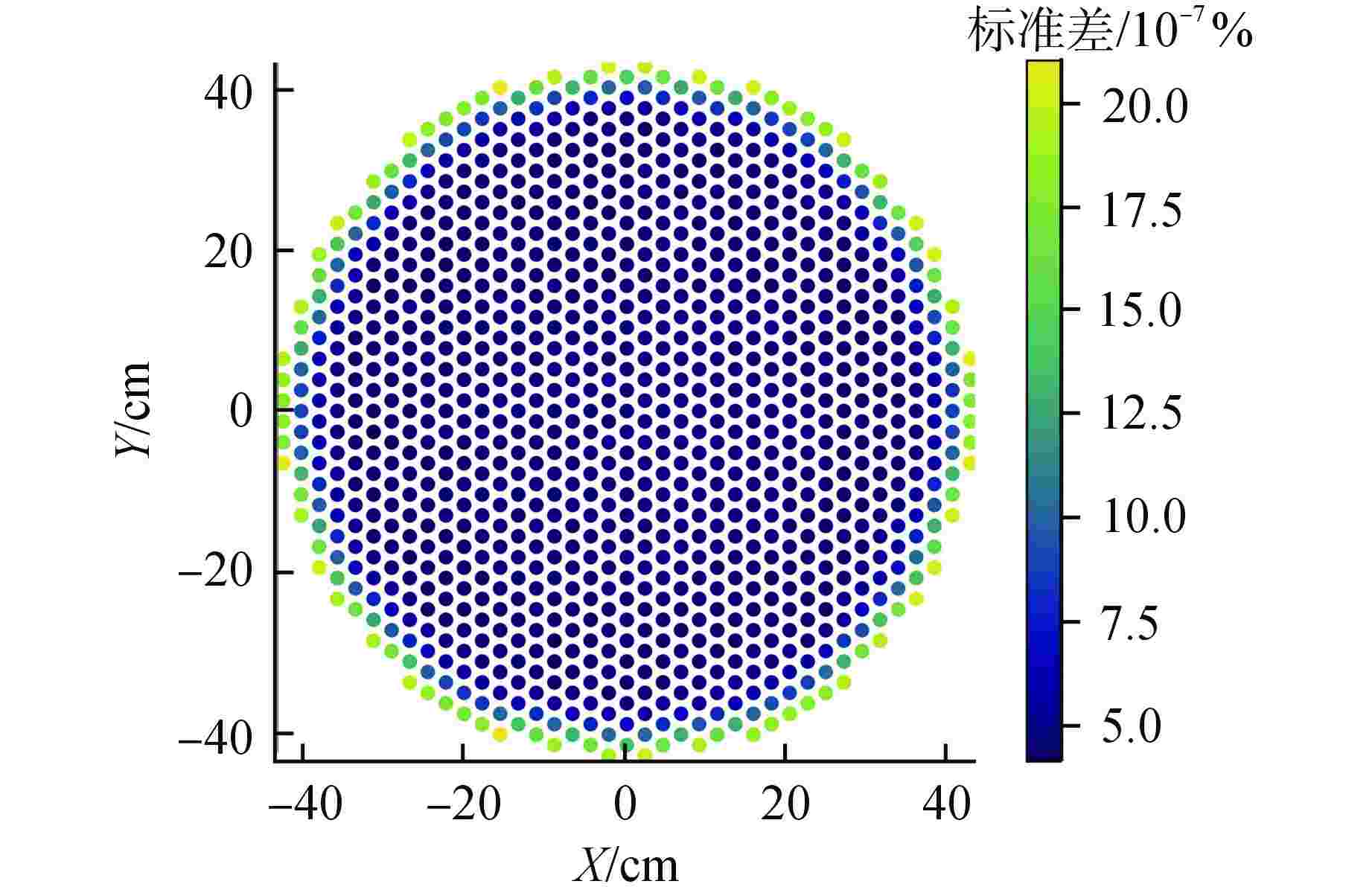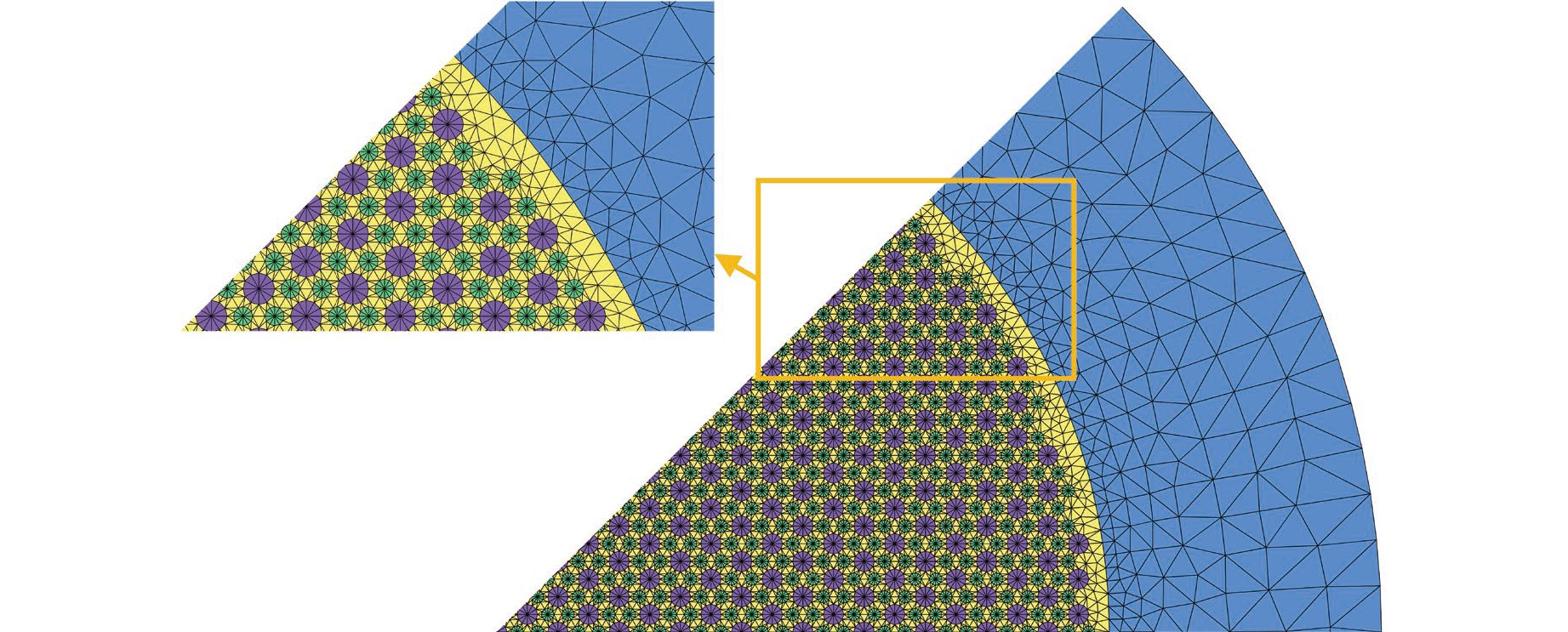Application of Unstructured Mesh Variational Nodal Method in He-Xe Cooled Micro Reactor
-
摘要: 先进小型反应堆设计方案具有复杂的几何结构和较强的中子泄漏特征。为更准确地对复杂几何的先进小型反应堆设计的中子学特性进行分析,本研究提出了一种基于离散纵标(SN)的非结构网格变分节块法(UVNM-SN)。UVNM-SN从二阶偶对称输运方程的泛函形式出发,在空间上采用任意三角形非结构网格以及坐标变换技术,角度上则采用SN将原方程进行解耦;选取了氦氙(He-Xe)冷却小型反应堆SIMONS作为分析对象,验证了UVNM-SN在实际应用对象中的性能。计算结果表明,UVNM-SN在复杂几何的非均匀问题中具有良好的几何适应性以及计算精度,可为先进反应堆数值模拟提供新的计算思路。
-
关键词:
- 变分节块法(VNM) /
- 非结构网格 /
- 氦氙冷却小型反应堆 /
- 离散纵标(SN)
Abstract: Advanced designs of micro reactors are distinguished by intricate geometries and pronounced neutron leakage. To enhance the precision of neutron property analysis in these complex geometrical designs, this study introduces an Unstructured Mesh Variational Nodal Method (UVNM-SN). The UVNM-SN method initiates from the functional formulation of the second-order even-parity neutron transport equation. Spatially, arbitrary triangular unstructured meshes and coordinate mapping techniques are employed. Besides, angular decoupling of the original equations is achieved through the application of the discrete-ordinate (SN) method. Furthermore, the SIMONS design, a helium-xenon (He-Xe)-cooled micro reactor, is chosen as the analytical subject to verify the performance of the UVNM-SN. Numerical results demonstrate that UVNM-SN exhibits geometric adaptability and computational precision in heterogeneous problems with complex geometries. Consequently, it is concluded that UVNM-SN can stand as an innovative strategy for numerical simulations in advanced micro-reactor designs. -
表 1 SIMONS算例的主要参数
Table 1. Main Parameters of the SIMONS Test Problem
参数名 参数值 燃料棒直径/cm 1.5 He-Xe冷却剂通道直径/cm 0.8 包壳厚度/cm 0.05 燃料-He-Xe冷却剂通道中心距/cm 1.5 燃料棒数目/根 1015 基体半径/cm 45 基体高度/cm 100 径向反射层厚度/cm 20 轴向反射层厚度/cm 10 表 2 不同数值方法在SIMONS算例中的数值结果
Table 2. Solutions of Different Numerical Methods for the SIMONS Test Problem.
数值方法 多群蒙卡 UVNM-SN 扩散近似 keff 1.15380±0.00002 1.15450 1.12966 keff误差/pcm 70 −2414 最大积分棒功率误差/% 0.63 7.20 平均积分棒功率误差/% 0.16 1.72 -
[1] STERBENTZ J W, WERNER J E, MCKELLAR M G, et al. Special purpose nuclear reactor (5 MW) for reliable power at remote sites assessment report: INL/EXT-16-40741[R]. Idaho Falls: Idaho National Laboratory, 2017. [2] XIAO W, LI X Y, LI P J, et al. High-fidelity multi-physics coupling study on advanced heat pipe reactor[J]. Computer Physics Communications, 2022, 270: 108152. doi: 10.1016/j.cpc.2021.108152 [3] EKLUND M D, DUPONT M, CARACAPPA P F, et al. Neutronics simulations of the RPI Walthousen Reactor Critical Facility (RCF) using Proteus-SN[J]. Transactions of the American nuclear society, 2017, 117: 114-115. [4] WANG Y Q, SCHUNERT S, ORTENSI J, et al. Rattlesnake: a MOOSE-based multiphysics multischeme radiation transport application[J]. Nuclear Technology, 2021, 207(7): 1047-1072. doi: 10.1080/00295450.2020.1843348 [5] FIORINA C, HURSIN M, PAUTZ A. Extension of the GeN-Foam neutronic solver to SP3 analysis and application to the CROCUS experimental reactor[J]. Annals of Nuclear Energy, 2017, 101: 419-428. doi: 10.1016/j.anucene.2016.11.042 [6] JARETEG K, VINAI P, SASIC S, et al. Coupled fine-mesh neutronics and thermal-hydraulics – modeling and implementation for PWR fuel assemblies[J]. Annals of Nuclear Energy, 2015, 84: 244-257. doi: 10.1016/j.anucene.2015.01.037 [7] WANG J P, MARTIN W R, DOWNAR T J, et al. Code verification and solution verification framework in pin-resolved neutron transport code MPACT[J]. Annals of Nuclear Energy, 2022, 178: 109365. doi: 10.1016/j.anucene.2022.109365 [8] HSIEH A, ZHANG G C, YANG W S. Consistent transport transient solvers of the high-fidelity transport code PROTEUS-MOC[J]. Nuclear Science and Engineering, 2020, 194(7): 508-540. doi: 10.1080/00295639.2020.1746619 [9] CHEN J, LIU Z Y, ZHAO C, et al. A new high-fidelity neutronics code NECP-X[J]. Annals of Nuclear Energy, 2018, 116: 417-428. doi: 10.1016/j.anucene.2018.02.049 [10] ZHAO C, PENG X J, ZHANG H B, et al. A new numerical nuclear reactor neutronics code SHARK[J]. Frontiers in Energy Research, 2021, 9: 784247. doi: 10.3389/fenrg.2021.784247 [11] ZHANG T F, LI Z P. Variational nodal methods for neutron transport: 40 years in review[J]. Nuclear Engineering and Technology, 2022, 54(9): 3181-3204. doi: 10.1016/j.net.2022.04.012 [12] SMITH M A, TSOULFANIDIS N, LEWIS E E, et al. A finite subelement generalization of the variational nodal method[J]. Nuclear Science and Engineering, 2003, 144(1): 36-46. doi: 10.13182/NSE144-36 [13] ZHANG T F, WANG Y P, LEWIS E E, et al. A three-dimensional variational nodal method for pin-resolved neutron transport analysis of pressurized water reactors[J]. Nuclear Science and Engineering, 2017, 188(2): 160-174. doi: 10.1080/00295639.2017.1350002 [14] ZHANG T F, LEWIS E E, SMITH M A, et al. A variational nodal approach to 2D/1D pin resolved neutron transport for pressurized water reactors[J]. Nuclear Science and Engineering, 2017, 186(2): 120-133. doi: 10.1080/00295639.2016.1273023 [15] WANG Y Q, RABITI C, PALMIOTTI G. Krylov solvers preconditioned with the low-order red-black algorithm for the PN hybrid FEM for the INSTANT code[C]//Proceedings of the International Conference on Mathematics and Computational Methods Applied to Nuclear Science and Engineering (M&C 2011). Rio de Janeiro, RJ, Brazil: CD-ROM, Latin American Section (LAS), American Nuclear Society (ANS), 2011. [16] LI X Y, LIU X J, CHAI X, et al. Multi-physics coupling simulation of small mobile nuclear reactor with finite element-based models[J]. Computer Physics Communications, 2023, 293: 108900. doi: 10.1016/j.cpc.2023.108900 [17] ROMANO P K, HORELIK N E, HERMAN B R, et al. OpenMC: a state-of-the-art Monte Carlo code for research and development[J]. Annals of Nuclear Energy, 2015, 82: 90-97. doi: 10.1016/j.anucene.2014.07.048 [18] GEUZAINE C, REMACLE J F. Gmsh: a 3-D finite element mesh generator with built-in pre-and post-processing facilities[J]. International Journal for Numerical Methods in Engineering, 2009, 79(11): 1309-1331. doi: 10.1002/nme.2579 [19] SUN Q Z, XIAO W, LI X Y, et al. A variational nodal formulation for multi-dimensional unstructured neutron diffusion problems[J]. Nuclear Engineering and Technology, 2023, 55(6): 2172-2194. doi: 10.1016/j.net.2023.02.021 -





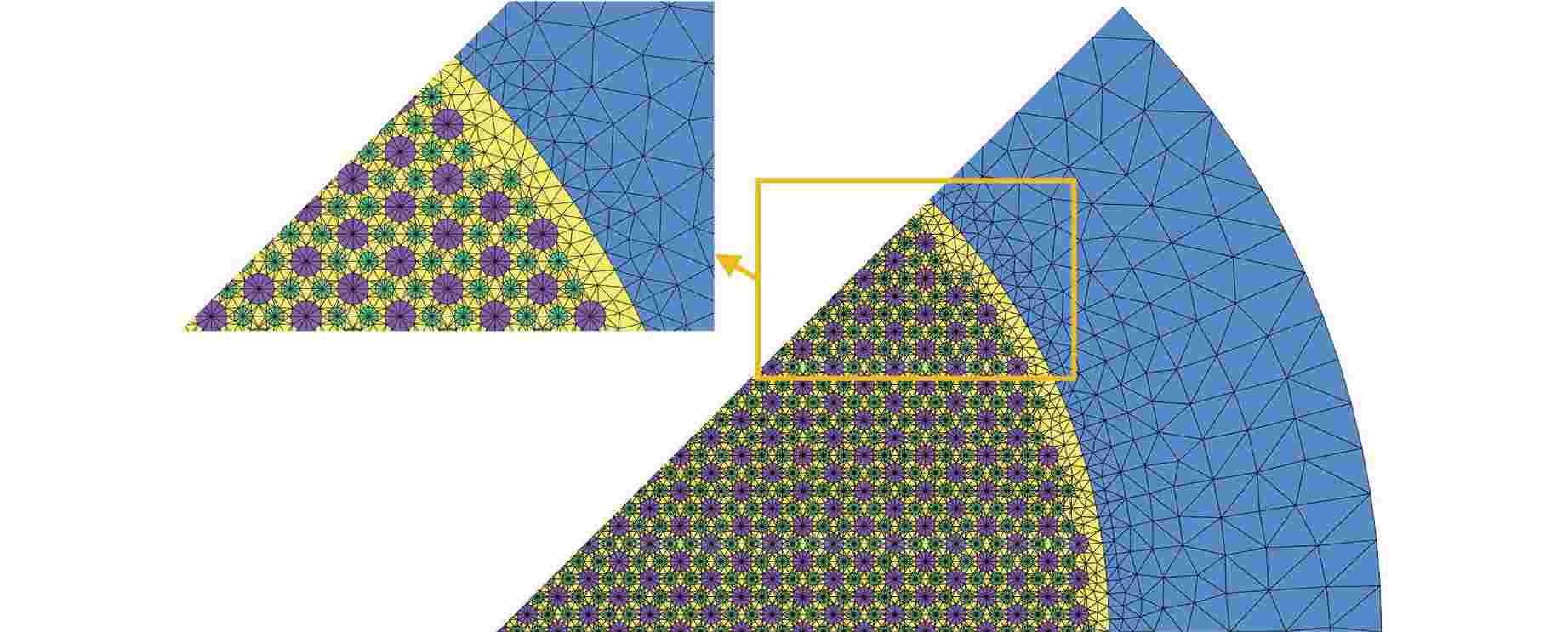
 下载:
下载:
